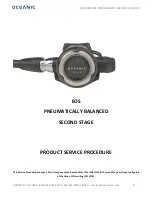
Range:
The
Range
switch selects between five calibrated scales (from 30 mA to 3
Amps). The sixth range is uncalibrated and tied to the unit's
Sensitivity
control. To
prevent meter pegging, begin checks on a high range and work down. To estimate
unknown current levels, use the formula below (I = Unknown Current in Amps, P =
Applied Power in Watts, and R = Load Resistance in Ohms).
I
P
R
=
Sensitivity:
The
Sensitivity
control varies meter drive when reading weak RF-current
levels (below 30 mA). At maximum setting (fully clockwise), RF currents of 1 mA or
less will yield a usable meter deflection. This function is especially useful for tracking
RFI pickup on household wiring and cables. Note that some residual meter deflection is
present with the sensitivity control at maximum. This is normal.
Power Switch:
Power is applied via a "press-to-test" momentary contact switch. A
built-in hold circuit keeps the unit powered for approximately 15-20 seconds after the
switch is released. This feature permits "hands-off" measurement on energized
conductors.
RF Hazard--Important Warnings:
1. RF-current measurements must be conducted with extreme caution. Physical
contact with conductors carrying even moderate RF-energy levels can result in severe
RF burns, or injury.
2. Do not touch the metal meter case while measuring current with RF levels
exceeding 5 Watts or RF voltages exceeding 50 Volts. Power the meter, then apply RF
and make measurement "hands-off" using the 15-second power-down feature.
3. Avoid measuring RF current on conductors where high RF voltages may be present
(>500 Volts). Damage to your meter may result.
Theory of Operation
<30mA
3A
Sensitivity
M
<30mA
3A
Calibrate
Q1 Timed Switch
T1
R2
R3
SW1
9V
Det
D2
Line Under
Test
Sense Coil
U1a
U1b
SW2b
SW2a
Range
Summary of Contents for MFJ-854
Page 5: ...Schematic Parts List ...























